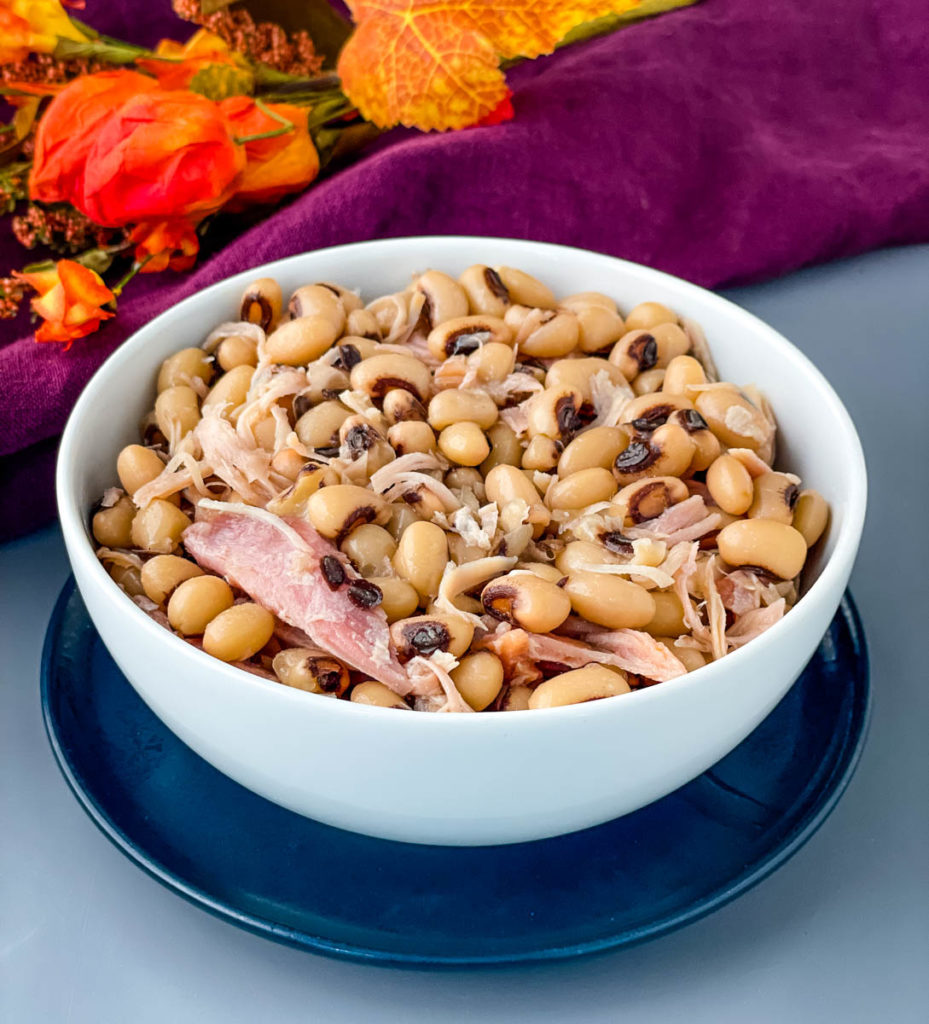Southern Black-Eyed Peas aren’t simply a soul food staple—They’re a hearty, comforting dish infused with tradition, history, and big Southern flavor. Whether eaten on New Year’s Day for luck or as a tasty side dish on a Sunday dinner plate, black-eyed peas are a must-have recipe in Southern cooking.

In this article, we’ll discover the history of black-eyed peas in Southern cuisine, provide a tasty traditional recipe, and give you tips, variations, and serving suggestions to help you ace this classic dish.
The History Behind Southern Black-Eyed Peas
Black-eyed peas, which are also referred to as cowpeas, had their origin in Africa and were introduced to the Americas through the transatlantic slave trade. They were incorporated into African American cuisine and Southern cuisine because they were inexpensive, durable, and nutritious.
Over time, black-eyed peas came to be associated with luck and prosperity, particularly when eaten on New Year’s Day—usually in conjunction with collard greens (money) and cornbread (gold). This tradition, particularly in the American South, is thought to ensure fortune for the coming year.
Why We Love Black-Eyed Peas
Southern Black-Eyed Peas are more than lucky—they’re:
Hearty and Filling: Rich in protein and fiber.
Budget-Friendly: Inexpensive and easily found.
Versatile: A side dish, main course, or contribution to a stew.
Flavorful: Redolent with smoky meat, herbs, and spices.
The dish is warm, comforting, and intensely satisfying—a true hug in a bowl.
Traditional Southern Black-Eyed Peas Recipe
Ingredients:
1 pound dried black-eyed peas (soaked overnight)
1 smoked ham hock or 1 cup diced smoked turkey/ham/bacon
1 small onion, chopped
2 cloves garlic, minced
1 bay leaf
6 cups chicken or vegetable broth (or water)
1 tsp salt (or to taste)
1/2 tsp black pepper
1/2 tsp smoked paprika (optional)
1/2 tsp crushed red pepper flakes (optional for heat)
2 tbsp olive oil or butter
Optional: chopped parsley or green onions for garnish
Instructions:
Prepare the Peas
Rinse soaked peas and drain. Set aside.
Sauté Aromatics
In a large pot, heat olive oil over medium heat. Add chopped onion and sauté until translucent (about 3-4 minutes). Add garlic and cook for another minute.
Add the Meat
Add in your ham hock, turkey, or bacon. Cook 3-5 minutes to extract the smoky flavor.
Combine Ingredients
Add black-eyed peas, broth, bay leaf, and seasonings (salt, pepper, paprika, red pepper flakes). Stir together.
Simmer Low and Slow
Bring to a boil, then reduce heat to low. Cover and simmer for about 1.5 to 2 hours, or until peas are tender and flavorful. Stir occasionally and add more broth if needed.
Final Touches
Once done, remove the bay leaf and meat bone (if using ham hock). Shred any meat and stir it back into the pot.
Serve Hot
Garnish with parsley or green onions. Enjoy with cornbread or over rice.
Cooking Tips
Don’t skip the soaking: Soaking speeds up the cooking of peas and decreases gas-forming compounds.
Add greens: Collards or mustard greens provide color and nutrients.
Make it veggie: Omit the meat and add smoked paprika and vegetable broth for a deep, smoky flavor.
Make it thicker: Mash some peas with the back of a spoon to make it creamier.
Popular Variations
Hoppin’ John: South Carolina low-country recipe that combines black-eyed peas with rice and pork, commonly served on New Year’s Day.
Spicy Version: Add diced jalapeños or cayenne pepper for spice.
Tomato-Based Stew: Add diced tomatoes, celery, and bell pepper for a stew-like version.
Instant Pot or Slow Cooker: Black-eyed peas can be prepared faster in a pressure cooker or simmered all day in a slow cooker.
What to Serve with Black-Eyed Peas
Complete your Southern meal with:
Cornbread: Great for sopping up the broth.
Collard Greens: Traditional Southern combination and one of the New Year’s luck foods.
Fried Chicken or Catfish: Turn it into an entree.
Rice: Serve peas over white or brown rice for a comforting bowl.
Pickled Vegetables: Balance with acidity to cut through richness.
Nutritional Benefits
Black-eyed peas are a nutritional superstar, providing:
Plant-based protein
High fiber (good for digestive health)
Folate and iron (excellent for blood health)
Low fat and cholesterol-free
They’re particularly good for vegetarians, vegans, or those on a heart-healthy diet.
Conclusion
Southern Black-Eyed Peas are more than a meal—they’re a celebration of culture, history, and community. From their roots in Africa to their spot on contemporary Southern tables, black-eyed peas embody comfort, tradition, and good luck.
Whether you’re making them for a holiday, family dinner, or just to warm up on a chilly evening, this classic dish is sure to satisfy both the stomach and the soul.
So grab your favorite cast-iron pot and a bag of black-eyed peas—delicious Southern comfort awaits!

Leave a Reply